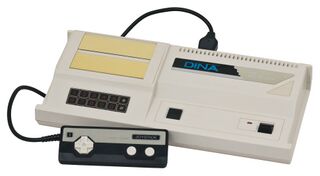Golden Age of Arcade Video Games

The Golden Age of Arcade Video Games is the definition of the peak era in arcade video game popularity and technological innovation. The exact time period is debated but most sources place it around the late 1970's and early 1980's which lasted til the mid 1980's
Overview
During that period in time the arcade technology was quite sophisticated, enough to provide good quality of graphics and sounds but it was still basic. For the arcade game to be successful it had to rely on game play. The emphasis on the game play is one of the reasons why someone today can still enjoy playing them.
Business
During this time arcades started to appear all over North America and Japan. They where found in all sorts of places, supermarkets, liquor stores, gas stations and other retail establishments who where looking for some extra income. The most Popular games caused a teenagers to flock to these locations depending whether their favorite game is there or not.
Technology
When arcade games started to get momentum in in the late 1970's with games such as Gee Bee and Galaxian. The CPU in these machines where able to allow more complexity to be developed into them. This age saw developers experementing with new hardware and started to use vector displays over the conventional raster display but vector technology saw a decline due to the high cost of repairs.
Most popular games during this period
1978
Space Invaders1979
AsteroidsGalaxian
Lunar Lander
1980
BattlezoneBerzerk
Centipede
Defender
Missile Command
Pac-Man
Star Castle
Tempest
Warlords
Wizard of Wor
1981
Donkey KongFrogger
Galaga
Ms. Pac-Man
Qix
Vanguard
1982
BurgertimeDig Dug
Joust
Moon Patrol
Pole Position
Q*bert
Robotron: 2084
Time Pilot
Tron
Xevious
Zaxxon
1983
Dragon's LairElevator Action
Mario Bros.
Spy Hunter
Star Wars
Tapper
1989
Final Fight1991
StreeThe end of the era
New generations of home computers and game consoles struck a blow to the arcade gaming scene Which saw a steady decilne in its comunity. The arcade scene still exists today but at a fraction of what it once was, there are arcade games best of modern day consoles such as the Sony PlayStation 2, NintendoGameCube (Triforce), and Microsoft Xbox





-25.jpg)















